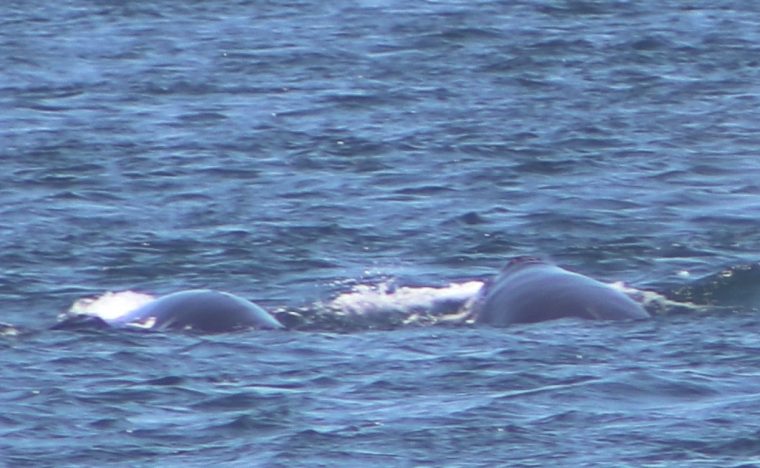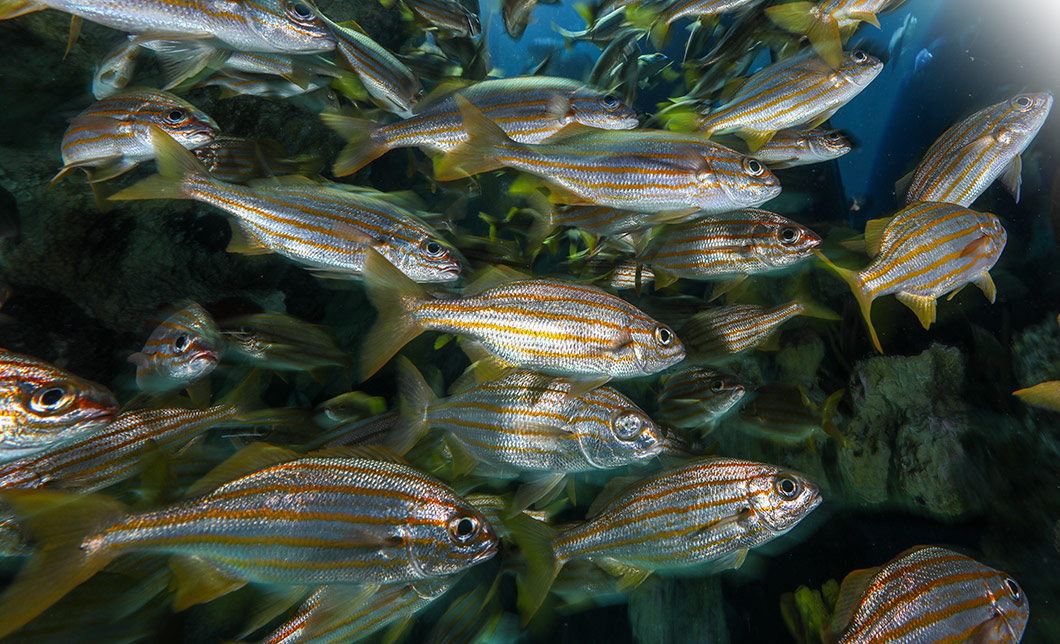We will be closed on Tuesday, April 30, for a day of strategy work and team building.
The New Balance Foundation Marine Mammal Center will be closed for exhibit maintenance on Monday, April 29 and Wednesday, May 1.

BOSTON, MASS. (June 4, 2021) – New England Aquarium scientists have identified a North Atlantic right whale mother and calf spotted swimming off Brier Island, Nova Scotia, as the 18th pair of the season, bringing this season’s total number of documented mother-calf pairs among these critically endangered animals to the highest count since 2013.
**PHOTOS AVAILABLE HERE, WITH CREDIT TO AMY TUDOR**
On May 20, Amy Tudor, a naturalist for Mariner Cruises Whale Watching on Brier Island, Nova Scotia, was on the ferry heading toward Long Island, Nova Scotia, when she spotted a whale 100 yards from the ferry. She immediately recognized it as a young right whale, and her husband took photographs from the Brier Island shoreline. Those photographs showed a mother right whale and a small calf moving back and forth in Grand Passage until they swam west out of the passage and into the Bay of Fundy.
On Memorial Day, some of those images were relayed to Dr. Moira Brown of the Canadian Whale Institute who forwarded them to right whale researchers at the Anderson Cabot Center for Ocean Life at the New England Aquarium. Because every mother/calf sighting is important, the team reviewed the pictures quickly and determined this was another new mother for the year.
Aquarium scientists identified the whale as “Lobster,” number 3232 in the North Atlantic Right Whale Catalog maintained at the Aquarium. Lobster, named because the identifying callosity pattern on the front of her head looks like a lobster with claws, was born in 2002 to mother Catspaw (Catalog #1632) and gave birth to her first calf in 2015 at the age of 13. She and her 2015 calf were seen and photographed just briefly by an observer on a dredge in the channel outside of Brunswick, GA, and that was the only sighting of the pair that year.
“Lobster’s sighting in the eastern Bay of Fundy in May is not completely unexpected,” said Philip Hamilton, a senior scientist at the Aquarium. “Although right whales are more commonly found in the Grand Manan Basin in the Bay of Fundy in July through October, mothers and calves have been seen early in the season along the western shore of Nova Scotia, often only seen once or twice before moving on. Given that Lobster has been a regular visitor to the Gulf of St. Lawrence in recent years, there is some hope she and her calf will be seen there later this summer.”
While right whale mother/calf pairs are usually first detected off the coast of the southeastern U.S. where most calves are born, Lobster joins a dozen or so mothers who were first detected with a calf north of the known calving area. For example, in 2017, two of the five mothers were not seen in the calving grounds; they were first seen with their calves off Cape Cod in April. Whether Lobster and these 2017 mothers gave birth off the southeastern U.S. and were simply not detected, or gave birth in more northern waters, is unknown. At least two mothers are known to have calved in northern waters. One of them, a whale named “Wart” (Catalog #1140), was first sighted with a calf in Cape Cod Bay in January 2013.
Although scientists welcome the news of this new right whale, calving in this decade has been well below the annual average of 23 from the previous decade. While 18 is still relatively low, every calf brings hope because the species remains critically endangered with fewer than 400 whales remaining.
Human impacts, specifically entanglements in fixed fishing gear and vessel strikes remain the biggest threats to the survival of this species. Efforts to reduce the lethal and sub-lethal impacts of these threats must be immediate and sustained priorities in both Canada and the U.S. The increase in calving is encouraging, as it shows us that these whales are resilient and will not only survive but thrive if human-caused injuries and mortalities are eliminated.
MEDIA CONTACT:
Pam Bechtold Snyder – psnyder@neaq.org, 617-686-5068

